FINDING MY ROOTS
Elbow Room and Food
What’s happening in the soil beneath your potted plants? Over time, roots fill up the pot so there’s little more room left for them to grow. And nutrients get sucked out of the soil or washed out by water.
I keep my potted plants hale and hardy with periodic repotting. This also gives me a look at the roots, which I always find interesting. (It was one area of my research when I worked for Cornell University.) If I see roots are pressed around the outside of the rootball, especially if traveling around and around it, they’re telling me they want out. A plant might also indicate its roots need more elbow room by looking like it’s ready to topple over. More subtle signs are potting soil that dries out very quickly, a plant hardly growing, or roots attempting escape out a pot’s drainage holes.
Rapidly growing plants need repotting yearly, especially when they are young; older plants and slow growers can get by with being repotting every two or three years. Some plants hardly ever need repotting, such as — looking around my collection — my amaryllis (Hippeastrum), bay laurel, hardy cyclamen, jade plant, aloe, and cactus.
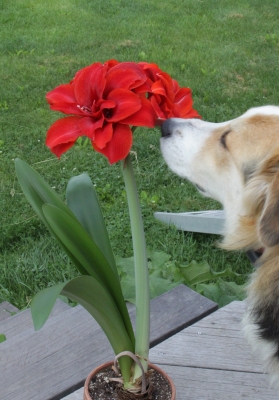
Amaryllis & Sammy
I wait to repot my ponytail palm until its bulbous base breaks open the pot it’s growing in; this happens about every 15 years. Same goes for my clivia.
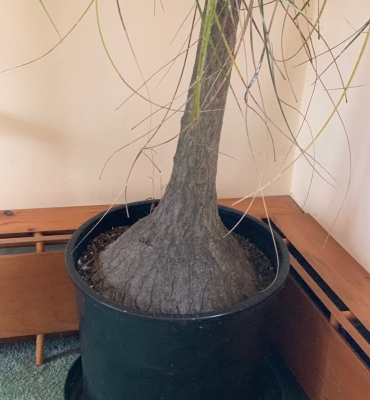
Ponytail palm
New Dirt, New Home
Now, when plants are dormant or semi-dormant yet soon to jump into action, is a good time for repotting, especially for any plant that’s going right back into the same pot that it now calls home.
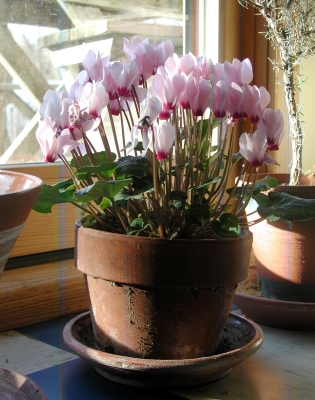
Hardy cyclamen in pot
And that’s the first decision I make, whether to move a plant to a larger pot, in which it will grow commensurately larger, or, if the plant has reached its allotted (by me) size, to keep it in the same pot. I repotted my jade plant into successively larger pots for perhaps a half-dozen years, but after that it always went back into the same pot. Otherwise, the jade “tree” would not have fit through doorways on its way outdoors each summer and indoors each autumn.
Before dealing with a plant needing repotting, have ready a pot, moistened potting soil, a sharp stick, and a blunt stick. New clay pots need to be soaked overnight before use. Cover any drainage hole(s) with gravel, broken pieces of clay pot, or screening, just enough to keep potting soil from washing out the bottom. Then put a layer of potting soil into the pot.
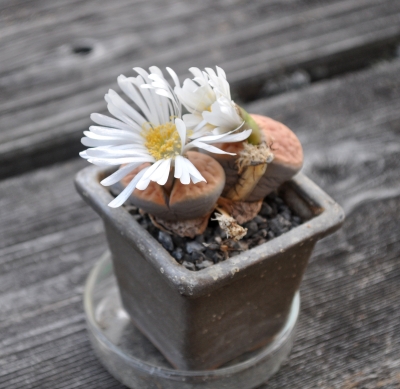
Lithops in bloom, almost never repotted
Next, slide the plant out of its pot. With a small plant, invert the pot, holding the root ball, and give the pot’s rim a rap on the edge of a table. Lay a large plant on its side, hold the stem, then rap the pot’s rim with a mallet. If no amount of tugging and rapping extricates a plant from its pot, smash the pot with a hammer or cut it away.
Before repotting a plant into a larger pot, use the sharp stick to tease the outer layer of roots free from the root ball. Sometimes I make vertical slices around the root ball and spread apart the opening at each cut. Either way, I then put enough soil in the bottom of the new pot so the old soil line of the root ball is a half-inch lower than the pot rim. After scooping soil into the space between the pot and the root ball, I pack it down with the blunt stick, occasionally thumping the pot on the ground or a tabletop to further settle the soil.
New Dirt, Old Home
For a plant that’s going to get new soil but not a new home, room needs to be made for the new soil. With a sharp knife or, if the roots are tough, a reciprocating saw fitted with a metal blade, I slice off some soil and roots from all around and the bottom of the root ball (a half to one inch for a six-inch pot, one to two inches for a twelve-inch pot, etc.). This may seem brutal, but most plants tolerate it fine.

Root pruning and repotting
This root-pruning and repotting is mandatory treatment for my largest fig plants. They fruit mostly on new shoots. The more vigorous the new shoots, the more figs I get to eat (to a point). New root growth and good nutrition fuel that vigorous growth.
Root-pruning and repotting is also mandatory for my smallest fig plant. Twice each year. This fig is a strictly ornamental species, weeping fig (Ficus benjamina), which, unrestricted in the tropics, would grow as large as our maple trees. Mine is a bonsai. At eleven years old, I’ve kept the tree to only a few inches tall and its roots in a bonsai “tray” only 3 by 4 inches long and wide, and an inch deep.
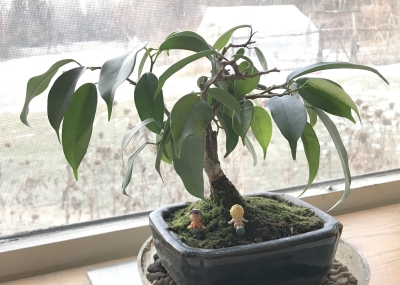 I don’t want lots of growth from this bonsai; a half inch of stem growth would be fine. But enough roots are needed to get water and some nutrients into the little plant. With little space for potting soil and roots, twice a year I cut back some roots and remove some soil to make room for new soil and root growth.
I don’t want lots of growth from this bonsai; a half inch of stem growth would be fine. But enough roots are needed to get water and some nutrients into the little plant. With little space for potting soil and roots, twice a year I cut back some roots and remove some soil to make room for new soil and root growth. 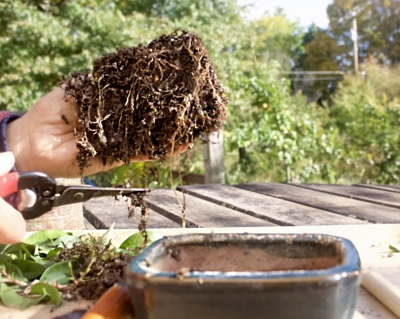
To help the plant survive this ordeal, I also remove all the leaves and cut back some stems so that the plant’s needs are put on hold until new roots begin to explore the fresh soil.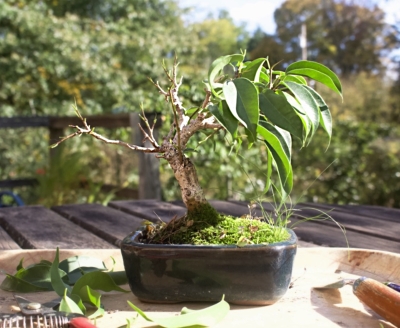
As soon as any plant is in its new home or back in its old home, I water it thoroughly. Even indoor plants can sense that spring is around the corner. Roots will begin growing into the new soil before new stems or flower buds show any signs of life.
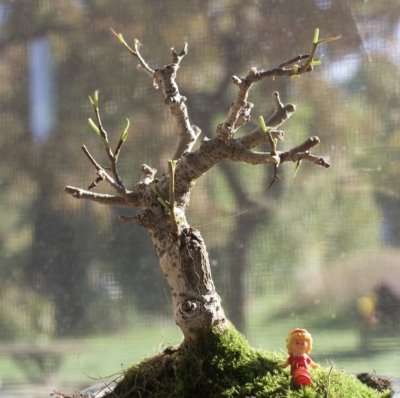

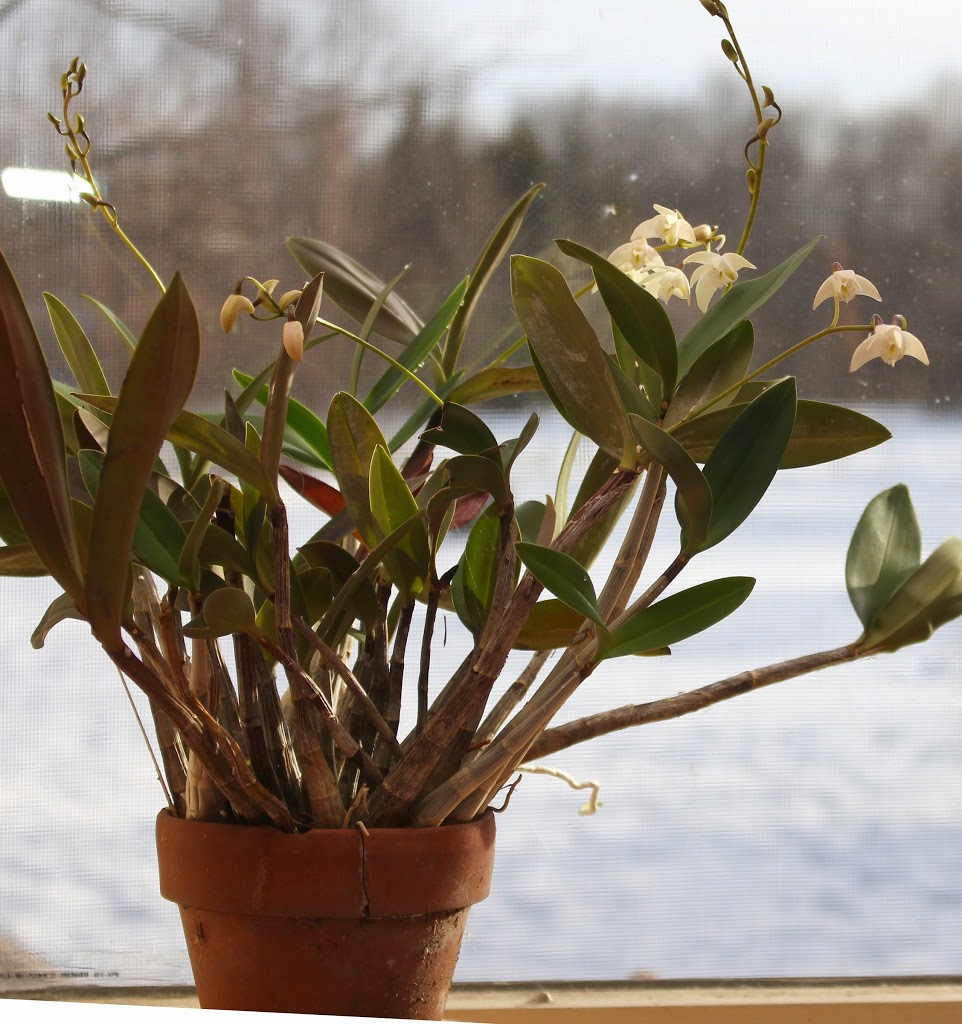


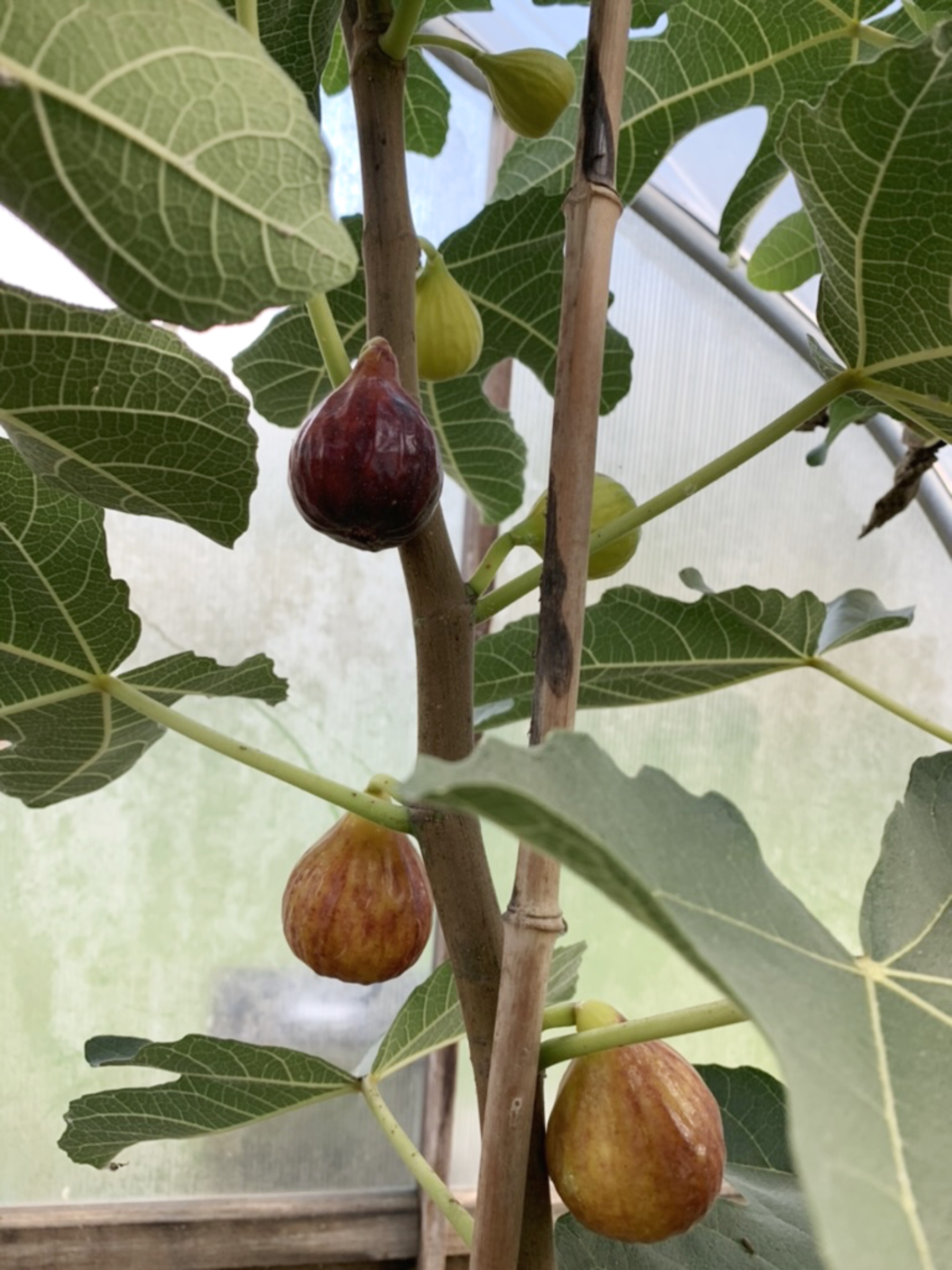
Leave a Reply
Want to join the discussion?Feel free to contribute!